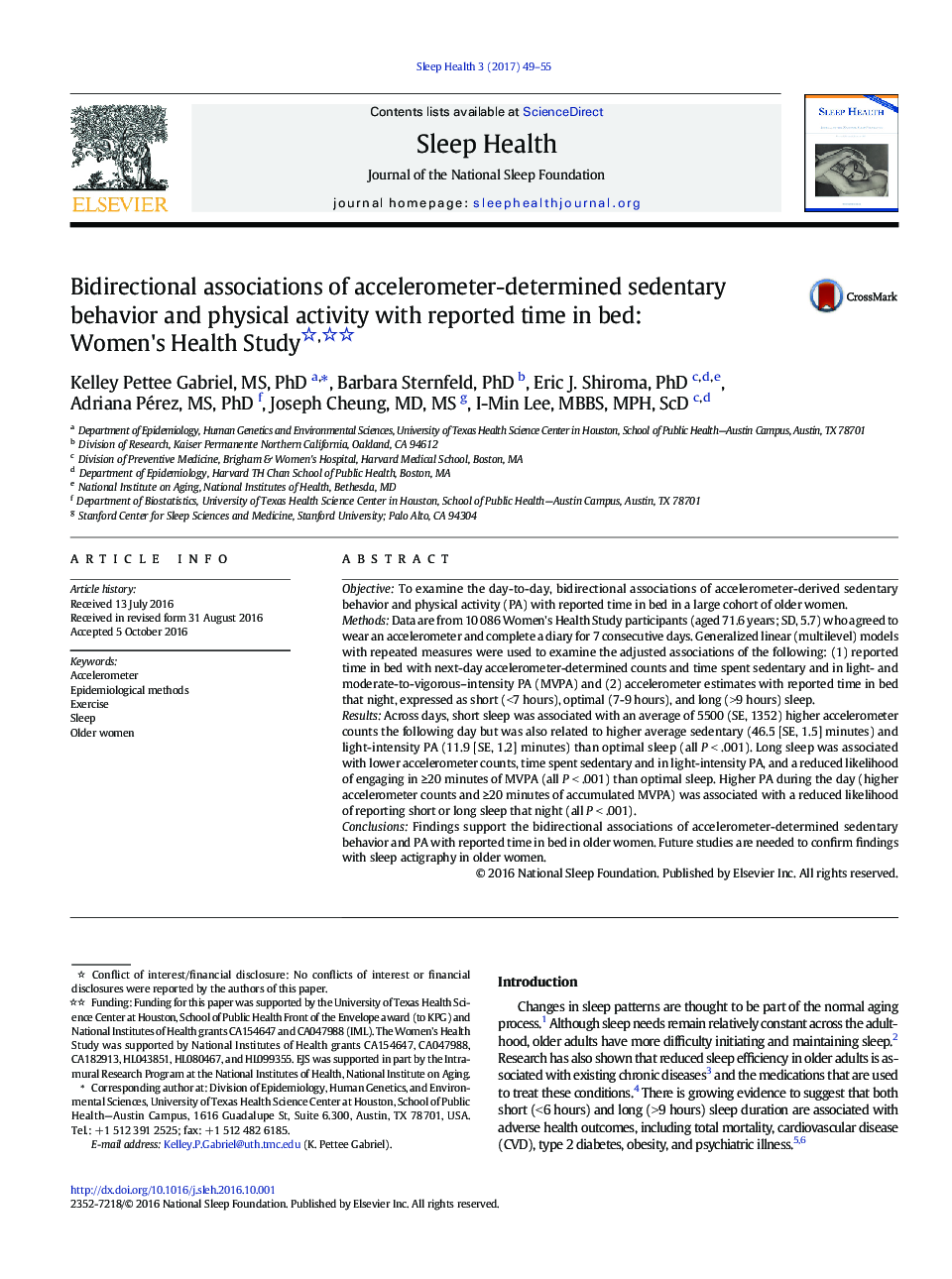| Article ID | Journal | Published Year | Pages | File Type |
|---|---|---|---|---|
| 5039575 | Sleep Health | 2017 | 7 Pages |
ObjectiveTo examine the day-to-day, bidirectional associations of accelerometer-derived sedentary behavior and physical activity (PA) with reported time in bed in a large cohort of older women.MethodsData are from 10 086 Women's Health Study participants (aged 71.6 years; SD, 5.7) who agreed to wear an accelerometer and complete a diary for 7 consecutive days. Generalized linear (multilevel) models with repeated measures were used to examine the adjusted associations of the following: (1) reported time in bed with next-day accelerometer-determined counts and time spent sedentary and in light- and moderate-to-vigorous-intensity PA (MVPA) and (2) accelerometer estimates with reported time in bed that night, expressed as short (<7 hours), optimal (7-9 hours), and long (>9 hours) sleep.ResultsAcross days, short sleep was associated with an average of 5500 (SE, 1352) higher accelerometer counts the following day but was also related to higher average sedentary (46.5 [SE, 1.5] minutes) and light-intensity PA (11.9 [SE, 1.2] minutes) than optimal sleep (all P < .001). Long sleep was associated with lower accelerometer counts, time spent sedentary and in light-intensity PA, and a reduced likelihood of engaging in â¥20 minutes of MVPA (all P < .001) than optimal sleep. Higher PA during the day (higher accelerometer counts and â¥20 minutes of accumulated MVPA) was associated with a reduced likelihood of reporting short or long sleep that night (all P < .001).ConclusionsFindings support the bidirectional associations of accelerometer-determined sedentary behavior and PA with reported time in bed in older women. Future studies are needed to confirm findings with sleep actigraphy in older women.
